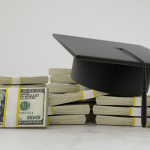As you navigate the evolving landscape of student loans in 2025, staying informed about the latest updates on student loan relief and debt forgiveness programs is crucial. This year, significant changes in loan repayment plans could impact your financial future, making it essential to explore your options. Additionally, understanding how to effectively budget and manage your finances during this time can lead to more informed decisions about refinancing or applying for financial aid. In this guide, you’ll find the most recent developments and essential tips to help you thrive amidst the shifting dynamics of student debt.
Latest Updates on Student Loan Forgiveness in 2025
In 2025, significant changes regarding student loans and debt forgiveness are unfolding. Many borrowers will find themselves adjusting to new regulations under the Trump administration. The latest proposals indicate that the Public Service Loan Forgiveness (PSLF) program may undergo alterations, with potential exclusions for various organizations based on their activities. This could affect your eligibility for loan repayment if you work in sectors deemed to be engaged in “illegal activities,” thus complicating the pathway to forgiveness for many.
Here’s a breakdown of key information related to the updates:
| Key Changes | Details |
|---|---|
| PSLF Program Adjustments | Potential disqualification for organizations involved in immigration or other politically sensitive issues. |
| Interest Resumption | Millions of borrowers will see interest charges resume, leading to higher repayment amounts. |
| Funding Limitations | New caps on borrowing amounts under federal programs could push some students toward private loans. |
| Tax Implications | Without legislative intervention, forgiven debts post-2025 may become taxable income, complicating financial outcomes. |
In light of these developments, it’s essential to stay informed and proactive about your financial aid options and keep track of any adjustments to your repayment plans. Ensure you are prepared for any potential implications on your loan repayment strategy.

Essential Tips for Effective Student Loan Repayment and Budgeting
Managing student loans effectively requires strategic planning and disciplined budgeting. Here are essential tips to guide you through loan repayment and help you avoid unnecessary financial strain:
- Create a Budget: Outline your monthly income and expenses to allocate funds for financial aid repayments. Utilize budgeting apps or spreadsheets for tracking.
- Know Your Loans: Understand the types of student loans you have, their interest rates, and repayment terms. This knowledge is critical for making informed decisions.
- Explore Refinancing Options: If you’re managing multiple loans with high interest rates, consider refinancing to secure a lower rate, which can save you money in the long run.
- Take Advantage of Payment Plans: Look into income-driven repayment plans tailored to your earnings. These can drastically lower your monthly payments and help you stay on track.
- Set Up Automatic Payments: Automate your loan repayment schedule to avoid missed payments and possible penalties. Many lenders offer a discount for enrolling in auto-pay.
- Consider Loan Forgiveness Programs: Research eligibility for programs that provide debt forgiveness after a specific number of repayments under qualifying conditions, especially if you work in public service.
By implementing these strategies, you can systematically manage your student loan obligations while maintaining a healthy budget, ultimately leading to financial freedom.
Frequently Asked Questions
What changes are being proposed to the Public Service Loan Forgiveness (PSLF) program under the Trump administration?
The Trump administration is proposing significant changes to the Public Service Loan Forgiveness (PSLF) program, aiming to exclude organizations deemed to engage in “illegal activities,” which includes entities that work with immigrants, provide gender-affirming care to minors, or support diversity and inclusion initiatives. This could lead to the disqualification of many public service workers from receiving loan forgiveness, forcing them to seek new employment or abandon their eligibility for the program. The lead decision on these disqualifications would rest with the U.S. education secretary, raising concerns about political motivations affecting borrowers’ financial futures.
How will the ending of the interest subsidy affect borrowers under the SAVE repayment plan?
Starting August 1, 2025, roughly 8 million borrowers enrolled in the Biden-era SAVE repayment plan will see interest accrue on their loans for the first time since legal challenges halted payment collections a year earlier. Previously, these borrowers enjoyed an interest-free forbearance, but with this change, many could incur substantial interest charges averaging over $3,500 annually or about $300 monthly. This transition means they must navigate additional repayment options due to overarching legal and regulatory uncertainties surrounding the SAVE plan.
What implications does the One Big Beautiful Bill have on student loan repayment plans and borrowing limits?
The One Big Beautiful Bill introduces the Repayment Assistance Plan (RAP) and a Standard Repayment Plan, significantly altering the landscape of student loan repayment. Under RAP, borrowers’ monthly payments are tied to income, but it requires up to 30 years for forgiveness. Additionally, new borrowing caps will be implemented, including lifetime borrowing limits of $100,000 for many graduate students. These changes can push more borrowers toward private loans, which typically lack the flexible repayment options available under federal programs, leading to a potential increase in financial strain.
What are the tax implications of student loan forgiveness starting in 2026?
Currently, forgiven student loans under the pandemic-era American Rescue Plan Act (ARPA) are excluded from federal taxable income through 2025. However, the One Big Beautiful Bill does not extend this exclusion past that date. Thus, any student loan debt forgiven after December 31, 2025, may again be considered taxable income, creating a potential tax burden for borrowers who are relying on forgiveness to alleviate their financial obligations. It’s crucial for borrowers to plan for this possibility and consult with tax professionals to understand their future liabilities.














Comments are closed.